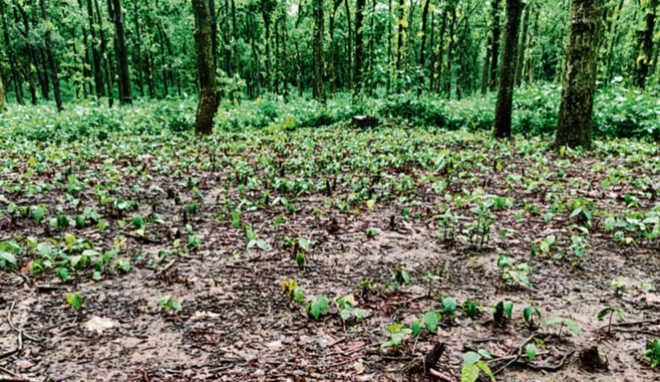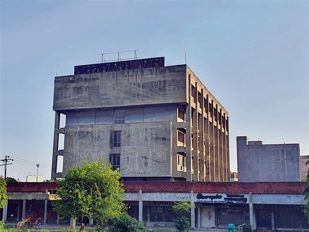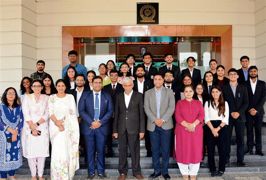
Ambika Sharma
What started on an experimental basis in Paonta Sahib forest division of Sirmaur district has earned the Forest Department a revenue of Rs 20 crore.
It was in February 2018, that the government of Himachal Pradesh sought permission from the apex court to undertake silviculture felling at three places — Nurpur, Bilaspur and Paonta Sahib — on an experimental basis, under the guidance of the apex court-appointed monitored committee. Though silviculture felling was a well-established forestry principle, it has been subject to prohibition since the last more than two decades.
Being the core-competency of Forest Department, officials had been asserting that silviculture management of forest is not only necessary for the regeneration of forest plant species, but also for carbon sequestration, thereby affecting climate change.
Silviculture is the process by which the crop constituting a forest are tended, removed and replaced by new crop, resulting in the production of wood of distinctive form. It is a widely accepted system for sustainable forestry.
Since the over-dense forests have little sunlight penetration, sun-loving smaller plants fail to thrive and a total ban on felling leads to accumulation of very old trees. Since they do not release as much oxygen from photosynthesis as they generate carbon dioxide from respiration, their use in making an area carbon negative is much less.
“After getting the nod from the apex court, a forest area of about 280 hectares was selected for undertaking silviculture felling in Paonta Sahib. A variety of protocols were devised and forestry works accomplished, including enumerating all trees in selected areas and marking the selected ones for felling, based on silvicultural principles — opening just the right amount of canopy to administer sunlight, which then aids regeneration,” said Kunal Angrish, Divisional Forest Officer, Paonta Sahib.
To begin with, an area of about 78 hectare was selected last year for various silvicultural works. The same area has now been enclosed to allow regeneration and the area is protected from grazing. The experiment has fetched positive results and the area has yielded about 6,300 cubic metre Sal timber, which has generated a revenue of about Rs 20 crore. This volume is miniscule in comparison to the yearly timber increment in the division, thus proving sustainability of the venture, said Angrish.
Terming it as a positive effect of regeneration, Angrish points out that silviculture extraction of timber could be re-allowed in the state, as this experiment has yielded remunerative results. “Sustainable tapping of forest resource can help perk up revenue generated from forests, as the annual production of Sal timber in Paonta Sahib forest division has been worked out to be 28, 000 cubic metre. This can fetch an income of as much as Rs 90 crore to Rs 100 crore given the market value of this economically significant forest species. Since this was the yield of barely one forest division in the state, its success can be replicated across the state, if the ban on silviculture was lifted,” said Angrish. VP Mohan, who heads the monitoring committee, said: “A holistic approach encompassing various forestry principles has been adopted, which has led to encouraging results by way of regeneration of these forests. A considerable revenue has also been earned from these divisions, which is an added benefit.”
About silviculture
Silviculture is the process by which the crop constituting a forest are tended, removed and replaced by new crop, resulting in the production of wood of distinctive form. It is a widely accepted system for sustainable forestry.
The benefits
Silviculture has multifarious benefits and it also helps in correcting many other parameters in these forests such as de-weeding, removal of diseased trees, fixing boundary pillars, repairing forest roads leading to these areas, etc. Given the hazardous effects of climate change being experienced globally, the regeneration of forests was a vital requirement especially because it will help in getting new carbon-negative forests with disease-free timber by replacing the dead and diseased ones.


























